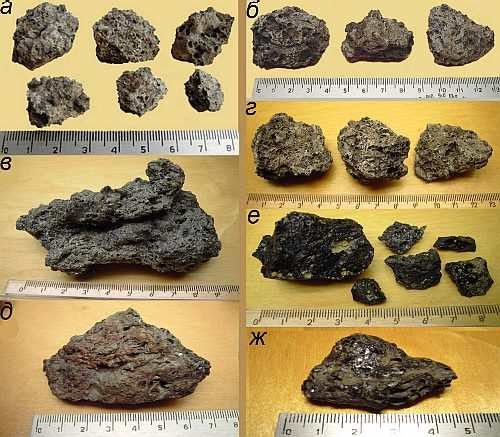Russian Scientists: We Have Found Evidence of Extraterrestrial Life (Photo Gallery)
According to Interfax Russia, scientist Yevgeny Dmitriyev of the Lavochkin Planetary Protection Center announced that he found fossilized biological fragments in the meteorites that fell in the Tunguska and Krasnoturansk regions of Russia. He believes that these fossilized biological fragments are strong evidence of extraterrestrial life.
The meteorite fragment containing suspected extraterrestrial remains
A microscopic view of suspected extraterrestrial skeletal fragments
In an interview with Interfax Russia, Dmitriyev stated that researchers discovered some special materials in the area where the meteorites fell - they looked like slag (in fact, they were initially mistaken for slag) and somewhat resembled green shattered glass.
Dmitriyev explained that data obtained in the laboratory showed that the cobalt and titanium content in these meteorite residues was 3%, copper was 6%, nickel was 7.5%, zinc was 20%, and the manganese content was 40 times higher than in ordinary glass. During a previous 15-year study, scientists concluded that these special substances might have evolved from skeletons of extraterrestrial life forms similar to ancient marine creatures on Earth.
It is important to note that these special "skeletal" fragments are very small and can only be seen under a microscope. Dmitriyev believes they may have originated from one of Jupiter's or another giant planet's moons. To date, scientists have found similar substances in the famous Tunguska meteorite fall region. Additionally, such material structures have been discovered near other areas where meteorites have fallen.
By analyzing meteorite samples from different locations, Dmitriyev concluded that the planets that gave birth to these meteorites might have had oceans composed of water, either in the past or even currently. If his conclusion is ultimately confirmed, then the earliest forms of life on Earth might have come from somewhere outside of Earth.
Currently, scientists have included other meteorite fall regions in their investigation scope. Dmitriyev and others hope to determine whether any new life forms are still being brought to Earth by meteorites today.
The Tunguska meteorite mentioned earlier fell in Siberia, Russia, in 1908. According to scientists' tests, the meteorite had a diameter of about 30 meters, exploded while passing through the atmosphere, and destroyed two thousand square kilometers of forest.
